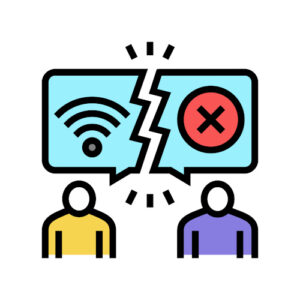
Education is one of the most important ways in which technology promotes equity. Digital tools and internet platforms have enabled students from varied backgrounds to gain access to high-quality educational materials. According to a published report, technology helps inclusive education by adapting learning experiences to individual requirements, making learning readily available for all (Sulecio de Alvarez & Dickson-Deane, 2018). Numerous programmes strive to provide technology to communities that are underprivileged. For example, Ethiopia’s One Laptop Per Child (OLPC) initiative seeks to provide technology-enabled access to educational resources for children in distant locations. Despite hurdles, the project demonstrates how technology can give educational possibilities to those who may otherwise fall behind (HuffPost).
Social media has become an effective instrument for marginalised communities to raise their views. Consider the Florida teens who used social media to fight for gun reform following the Parkland shooting. The campaign, fueled by social media platforms like Twitter and Instagram, ignited a national discourse and resulted in considerable societal change (The Guardian). The New Yorker reported on survivors using social media to establish the Never Again movement, demonstrating how technology can enable citizens to drive social change.

Notwithstanding efforts to close the digital gap, major disparities remain. Many rural and low-income communities lack access to dependable internet and contemporary technologies. Moreso, Statistics Canada reports that low-income households and rural communities face limited access to technology, hindering their capacity to benefit from digital improvements. Technology sometimes exacerbates existing inequities. For example, schools with more financing can afford the most advanced instructional equipment, providing their kids an advantage over those in impoverished schools. The article, “Avoiding Educational Technology Pitfalls for Inclusion and Equity” warns that technology built without considering various needs may deepen the disparity between various socioeconomic groups (Sulecio de Alvarez & Dickson-Deane, 2018). AI and machine learning are transforming numerous businesses, but they also carry substantial hazards. Algorithms may reinforce and even worsen biases that exist in the data on which they are taught. This can result in prejudiced results in fields such as jobs, healthcare, and law enforcement. A YouTube video on AI and bias highlights how biased algorithms can perpetuate societal preconceptions.
The influence of technology on societal equity is complicated. On the one hand, technology offers the ability to democratise access to education, empower marginalised voices, and close some of the digital gap. On the other hand, important difficulties such as persisting digital gaps, reinforcement of existing inequities, and algorithmic biases persist. For technology to actually produce a more egalitarian society (…I know we can never achieve an egalitarian society!), we must confront these issues head-on. This entails creating inclusive technology, providing widespread access, and constantly monitoring and eliminating biases in AI systems. However, we should celebrate how technology has helped us become more equitable over the past 100 years.




